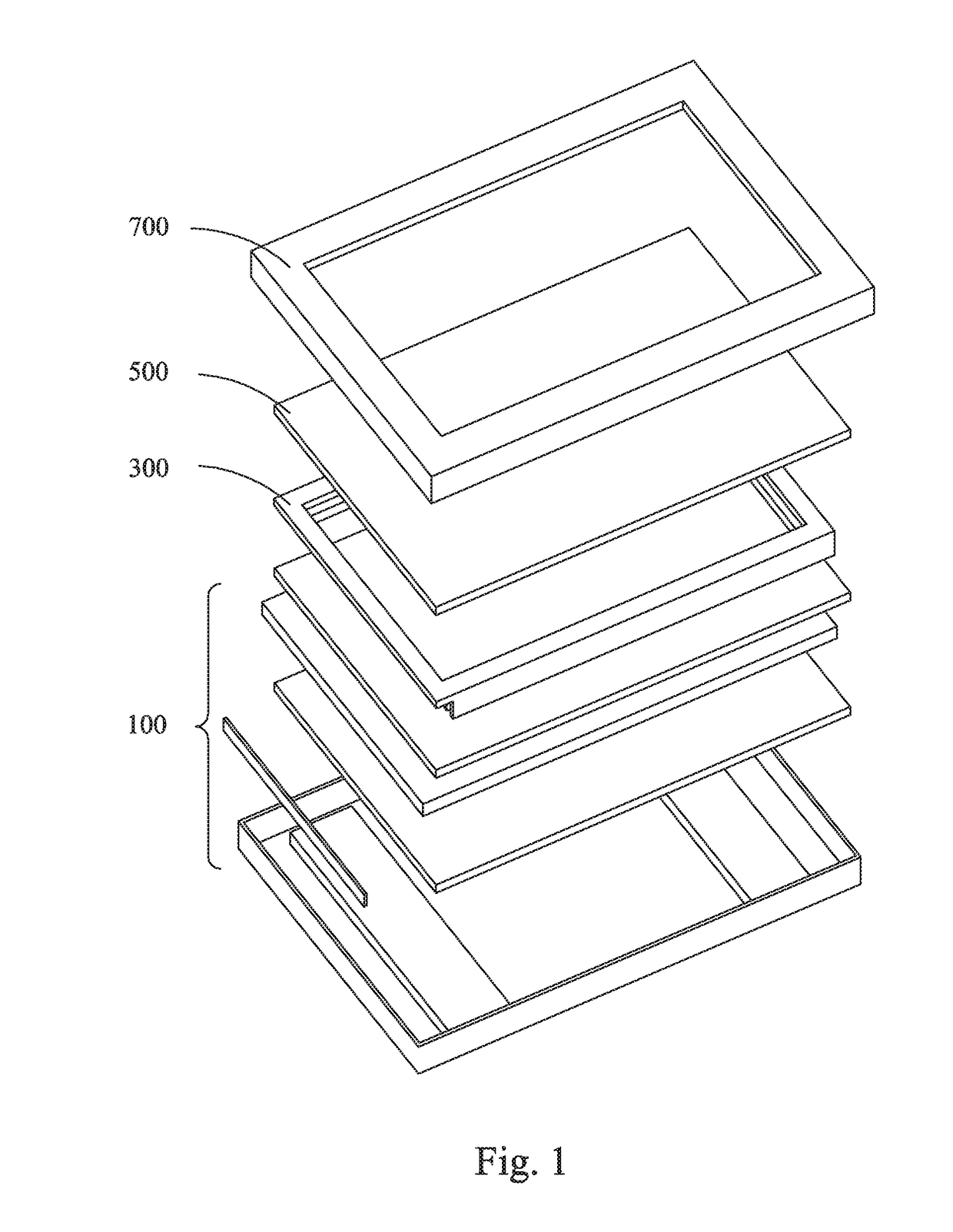Method for laminating glass panels and vacuum lamination device using same
a vacuum lamination and glass panel technology, applied in the direction of lamination ancillary operations, applications, chemistry apparatus and processes, etc., can solve the problems of affecting the performance of displaying, large deviation from the desired assembling precision, and large precision, so as to reduce manufacturing costs and improve manufacturing yield
- Summary
- Abstract
- Description
- Claims
- Application Information
AI Technical Summary
Benefits of technology
Problems solved by technology
Method used
Image
Examples
Embodiment Construction
[0041]To further expound the technical solution adopted in the present invention and the advantages thereof, a detailed description is given to a preferred embodiment of the present invention and the attached drawings.
[0042]Referring to FIG. 6, with additional reference to FIG. 7, the present invention provides a method for laminating glass panels, which specifically comprises the following steps:
[0043]Step 1: providing a TFT (Thin-Film Transistor) substrate 240 and a CF (Color Filter) substrate 220 to be laminated, the CF substrate 220 being coated with a seal resin 204, the TFT substrate 240 carrying liquid crystal 402 dropped thereon.
[0044]Step 2: aligning and laminating the TFT substrate 240 and the CF substrate 220 in a vacuum environment to complete a lamination process.
[0045]Step 2 specifically comprises: providing a vacuum chamber 2, an upper positioning plate 22, and a lower positioning plate 24, wherein the lower positioning plate 24 is made of quartz glass, attracting and...
PUM
| Property | Measurement | Unit |
|---|---|---|
| transmittance | aaaaa | aaaaa |
| transmittance | aaaaa | aaaaa |
| area | aaaaa | aaaaa |
Abstract
Description
Claims
Application Information
 Login to View More
Login to View More - R&D
- Intellectual Property
- Life Sciences
- Materials
- Tech Scout
- Unparalleled Data Quality
- Higher Quality Content
- 60% Fewer Hallucinations
Browse by: Latest US Patents, China's latest patents, Technical Efficacy Thesaurus, Application Domain, Technology Topic, Popular Technical Reports.
© 2025 PatSnap. All rights reserved.Legal|Privacy policy|Modern Slavery Act Transparency Statement|Sitemap|About US| Contact US: help@patsnap.com



